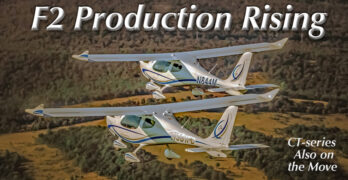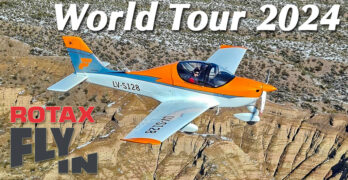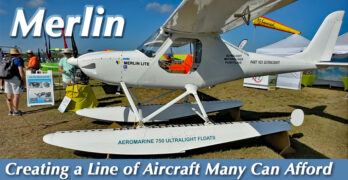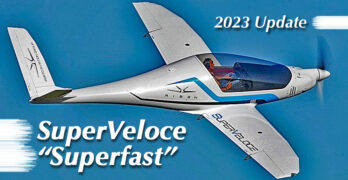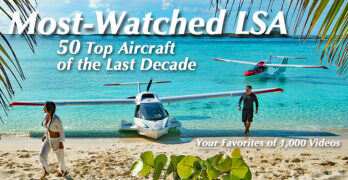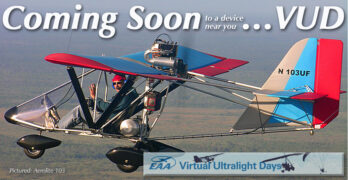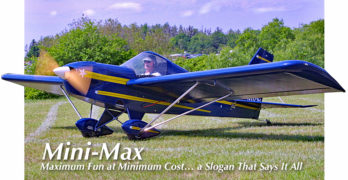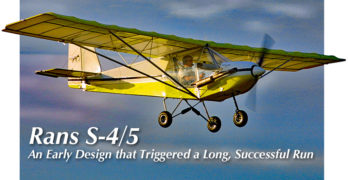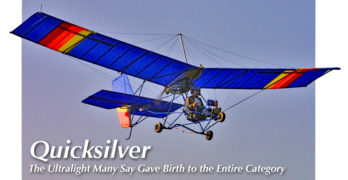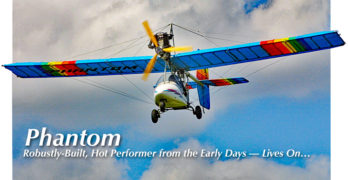As we Floridians prepare to face Hurricane Milton starting later today, I’m pleased to give an update on one of our leading companies in the LSA space. I refer to Flight Design, which gained fame for the enviable success of its CT-series aircraft (CT2K, CTSW, CTLS, CTLSi, CT Super). In the United States, more of these models fly as LSA than aircraft from any other brand.
In the USA, importing Flight Design aircraft is now handled by Airtime Aviation, a leader in its own right. For two decades, Airtime has been the nation’s #1 seller of Light-Sport Aircraft, delivering to American pilots a large percentage of those hundreds of CT-series aircraft. Importing was previously handled by Flight Design USA; regional dealers also contributed to enlarging the CT fleet in this country. The German designer has enjoyed good success in numerous countries.
In addition to those many sales, Flight Design has long been a leader among western producers moving into Eastern Europe to take advantage of skilled technical workers and engineers.
Search Results for : series
Not finding exactly what you expected? Try our advanced search option.
Select a manufacturer to go straight to all our content about that manufacturer.
Select an aircraft model to go straight to all our content about that model.
Rotax Aircraft Engines Fly-In World Tour 2024 — Dates Announced for Global Series
For some years, Rotax Aircraft Engines has invited their worldwide flock to Wels, Austria. This charming town north of Salzburg is near the home of Rotax’s headquarters in Gunskirken.
On three separate visits to Rotax I was able to attend one of their Fly-in events plus a special visit just for aviation journalists.
Beautiful and inviting as Wels is, this is not an easy visit for folks from the company’s far-flung customer base in nearly every country on Earth. So, in addition to inviting the world to their headquarters event, Rotax is going abroad.
Get ready for Rotax’s World Tour 2024!
The Biggest goes Bigger
BRP-Rotax is the Austrian subsidiary of BRP Inc, “a leader in the development and production of propulsion systems for the recreational and powersports markets,” according to the company.
Founded in 1920, BRP-Rotax builds innovative Rotax four-stroke and two-stroke high-performance engines used in products such as Ski-Doo and Lynx snowmobiles, Sea-Doo personal watercraft, Can-Am onroad and offroad vehicles, as well as for karts and sport planes.
Innovative, Versatile Merlin — a Video Series You Loved (because?) It’s Affordable
This Merlin has nothing to do with kids in colorful costumes seeking sweets from their neighbors. It does have to do with pilots liking interesting airplanes that they can fly over their neighbors… especially when they can afford the airplane.
In the last couple years, I’ve created videos with Merlin developer, Chip Erwin that have been among the most-watched on Dave Loveman‘s Light Sport and Ultralight Flyer YouTube channel. I interviewed numerous industry leaders like Chip in around 1,000 videos. The 50 most popular of those productions have been watched more than 10 million times.
In addition, when I write about Merlin on this website, lots of readers seem to love it.
So it’s hardly any wonder that I would be pleased to continue our Top 50 video series with one from just a couple of years ago. In a short time, it passed the 275,000-views mark. Since then, I did another on Merlin that went over well on my own channel (see below).
Streaking through the Sky — Speedy Risen Continues our Top-50 Aircraft Series
When this series started, Icon’s shapely A5 LSA seaplane topped the list. Handsome as it is and like most seaplanes, A5 is not particularly fast. The subject of this second in the series of 50 aircraft is Porto Aviation’s Risen. You might say it is on the other end of the speed spectrum Risen rips!
This one challenges all others in the speed contest for LSA (and later, mLSA).
Our #2 video on Videoman Dave’s immense library has garnered 700,000 views. That’s particularly satisfying as Dave was able to use footage from my first solo video effort.
I was at Aero Friendrichshafen 2015 when Risen made its debut. Videoman Dave was not able to attend that year but I hit it off with developer Alberto Porto and he consented to work with me. I was just learning how to shoot a video so for this one to go over well speaks loudly about how much pilots love Risen.
Announcing a New Series — 50 Most Popular Light Aviation Videos of the Last Decade
My most ambitious series ever is a showcase of the best of the best. In this series beginning right now, I will explore dozens of top videos made by my partner-in-movies, Videoman Dave, known properly as Dave Loveman. The videos aren’t my picks or his, though. They’re yours!
In each article, I will go beyond a short description and a video link. I’ll also update the information on the subject aircraft (a few engines are included). My goal is to celebrate video success stories while also providing fresh, useful details.
Dave and I started doing videos together back in 2007, shortly after Light-Sport Aircraft arrived on the scene. Since I joined him we’ve produced close to 1,000 videos while tripling our audience.
My series will touch on the top 50 most-watched videos on Videoman Dave’s Light Sport & Ultralight Flyer YouTube channel. In all we’ll review dozens of aircraft, three engines plus electric, an ultralight review, and a Mosaic update.
Affordable Aviation Will Star in EAA’s Jam-Packed Ultralight Webinar Series
Brrrr, it’s mighty cold in northern places like Oshkosh, Wisconsin, headquarters for EAA. However, those seasoned veterans of winter’s chill know how to warm things up.
After Covid, so many things changed for so long that, today, it’s getting hard to remember how it was. EAA hosted (in-person) Ultralight Days for some years, with a wintery gathering of aviation’s lightest flying machines at their splendid facilities right behind the HQ building. Specifically I mean Pioneer Airport. Covid played a role in suspending that event.
Yet EAA’s helpful experts, led by Charlie Becker and Timm Bogenhagen, had a fresher idea. While corporations were Zoom-meeting with staff and clients, Timm and Charlie sprung into action. In the new age of working remotely, how could EAA convey lots of knowledge to their members and how could non-members get a great object lesson in how experts can help?
Using their system that worked beautifully for homebuilders, EAA cooked up Virtual Ultralight Days.
Ultralight April 2020 — Tenth in the Vintage Series: Team Mini-Max
The grand finale to this series on Vintage Ultralights during the month of April 2020 focuses on an airplane that can be very inexpensive if bought used. However, even new models are quite the bargain brand new — $6,195 for a complete Mini-Max kit, not including engine, instruments, or paint — from Team Mini-Max LLC. The big difference is you must build a new one. For some this may be pure delight. Others want to fly sooner or don’t care to tackle the building effort.
As alert readers may have noticed, Mini-Max shares something with the third in this series, Fisher’s Koala. That also-mostly-wood aircraft was designed by Mike Fisher and Wayne Ison. The last man was the principal of Team Aircraft in Tennessee. Ison passed away in August of 2014 at the age of 90.
Wayne had a gentle yet determined way about him that I recall well.
Ultralight April 2020 — Ninth in the Vintage Series: Rans S-4/5
This first year I ever saw Randy Schlitter fly one his models at an airshow seems a hundred years ago. Indeed, since that distant memory at Sun ‘n Fun, this Kansas company has created a profusion of designs and delivered nearly 5,000 aircraft. To say it has been a great run qualifies as a significant understatement.
Today’s S-21 Outbound (pilot report video) or S-20 Raven (pilot report video) seem a long ways off from those very early models yet it does not take an expert eye to see they are clear descendants from the original Rans aircraft.
What began this fascinating evolution of a light airplane company started almost 40 years ago — here’s a report on the very first model, still flying! That humble little Coyote (Kansas is a U.S. prairie state so coyotes are a logical name) began something great but it remains a wonderful light airplane that you can buy today for a song.
Ultralight April 2020 — Eighth in the Vintage Series: Quicksilver MX
Ah, the Quicksilver! Where to start with this veritable icon of the ultralight sector?
With more than 15,000 flying, it even outranks Van’s Aircraft for kit aircraft that made it into the air — although Van’s has sold more kits in total and no one disputes the Western brand’s leadership position.
The earliest Quicksilvers were hang gliders (last photo). Engines came later but at first the weight-shift seat stayed (nearby image). The pilot had lateral control — still by weight shift — but via lines that moved surfaces. Pitch, however, was fully controlled by the pilot moving his or her body.
Those were fun days and provided wonderful memories (yes, I flew them as weight-shift aircraft). Yet the brand went on to vastly greater development. In this article, our focus is on the original three-axis control model, the oh-so-famous MX (multiple axis).
Quicksilver MX
Quicksilver’s MX entered the market in the early 1980s, like all the models featured in our Vintage Ultralight series.
Ultralight April 2020 — Seventh in the Vintage Series: Ultralight Flight Phantom
When the Phantom was introduced to the ultralight market at Sun ‘n Fun in 1982, it won the Best New Design award, not only for good looks and strong performance but for its structural integrity! Indeed, it was touted as having been tested to +9 and –6.6 Gs. Though dismissed by some pilots, wire-braced designs are actually very tough.
Phantom is a kit built from anodized aluminum tubing, bolted and riveted together. The wings, tail surfaces and ailerons are covered in Dacron sail cloth envelopes and Phantom used a double surfaced wing for better cross wind control and handling.
A wire-braced, high-wing, tricycle-gear ultralight aircraft in a tractor configuration, Phantom has a pilot pod with windscreen and a steerable nosewheel. (These were not common in those early days of ultralight vehicles.) Controls are standard stick and rudder — a left hand throttle and right hand joystick — with full span ailerons.
- 1
- 2
- 3
- …
- 65
- Next Page »


